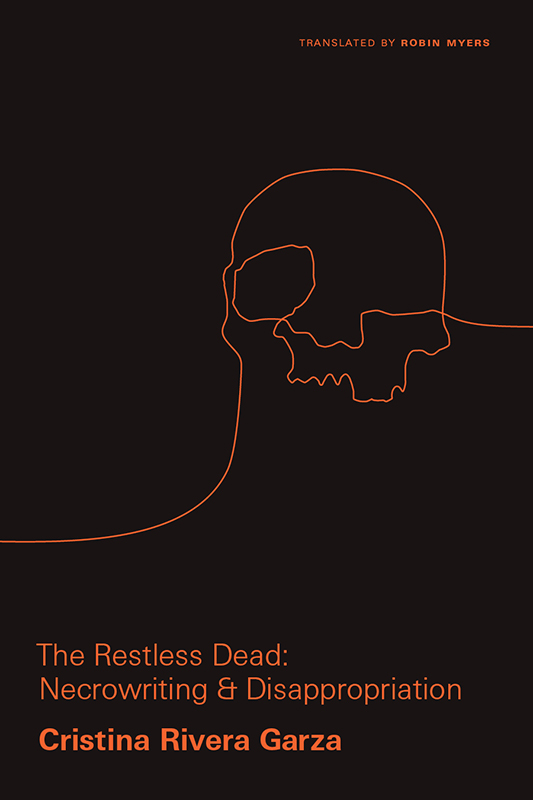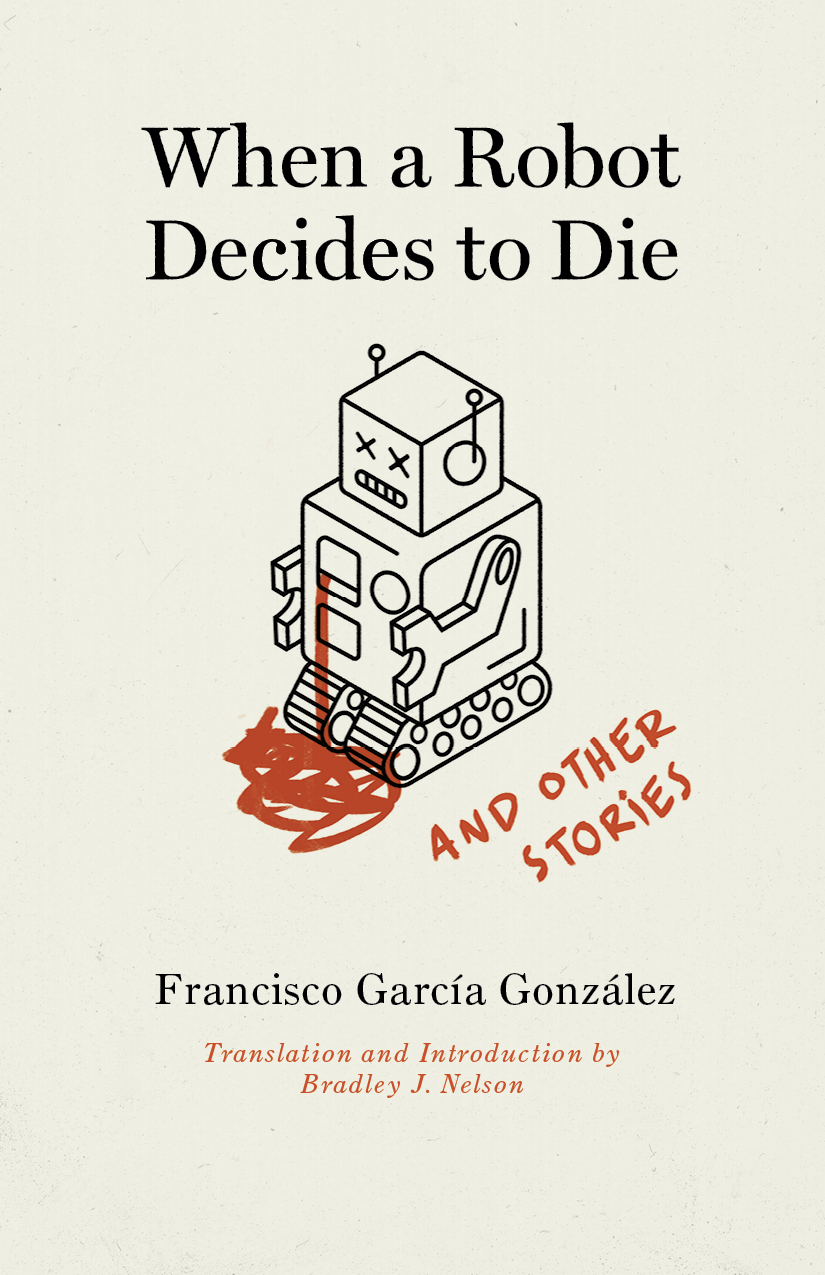Synergy at Its Best: A Look into the Coauthorship of Translations
The following is a guest post by Brittany R. Johnson, Grants Coordinator at Vanderbilt University Press.
For this year’s University Press Week 2021 blog tour, Vanderbilt UP is spotlighting the synergistic relationship between author and translator. In light of the years-old conversation and recent Publishers Weekly article on the views of putting author and translator names on book covers, Vanderbilt UP reached out to our writers to ask about the collaborative authorship of the translation process.
The Vanderbilt UP catalog includes translations of nonfiction, novels, and short stories—most recently speculative fiction. Today’s post features perspectives from poet Robin Myers (translator of 2020 MacArthur Fellow Cristina Rivera Garza’s The Restless Dead), Francisco García González and Bradley J. Nelson (the duo responsible for the forthcoming When a Robot Decides to Die and Other Stories), and Rodrigo Camargo de Godoi (author of Francisco de Paula Brito: A Black Publisher in Imperial Brazil). Read on as they share insight on the importance of ongoing communication throughout the translation process, the significance of placing the author and translator’s names on covers, and the necessity of acknowledging translators as authors.
“A record company would never intentionally omit Yo-Yo Ma’s name from a record of Bach cello suites…”
—Robin Myers
Robin Myers—who is the translator of multiple book-length publications and a 2019 winner of the Words Without Borders Poems in Translation Contest—describes why the author and translator are equally involved in the mission:
“… recognizing the translator on the cover is necessary both as an indication and reminder to the reader that they are in fact reading a translation, and a recognition that every translation is itself the result of a creative literary process.”
—Bradley J. Nelson
Like Myers, Bradley J. Nelson, professor of Spanish at Concordia University and a former National Endowment for the Humanities fellow, expresses the innate creativity of translation. He discusses how each translation of a work captures a different essence of the original:
“I have taught Don Quixote in English four times in the last ten years, and I have used a different translation every time. And every course has been different, due in part to differences in the translations. Moreover, since I often have native Spanish and English speakers, not to mention many students whose first language is neither Spanish or English, the problematics of translation remain a very productive point of discussion throughout the semester. Of course, this is enriched even more by the structure of the Quixote, which is presented as a translation into Spanish from Arabic, which opens the novel onto the ethnic, cultural, linguistic, and religious diversity of early modern Spain, all of which makes both the Quixote and the phenomenon of translation a very modern crucible for analyzing both the bridges constructed by translation and the barriers that remain, since there is no such thing as a transparent translation. For these reasons, and many others, foregrounding the editorial fact and process of translation by recognizing the translator on the cover is necessary both as an indication and reminder to the reader that they are in fact reading a translation, and a recognition that every translation is itself the result of a creative literary process.
In the case of the Quixote, every new translation is in dialogue not just with Cervantes but with all previous translations as well as differing editions in Spanish. I insist on basing my intervention here on Don Quixote because the history of the novel’s translations parallels the history of the novel’s continuing editorial studies and debates. In both cases, these histories reveal the evolution (for lack of a better word) of the relationship between translator and author, and reader and work. The point I am trying to make is that, on the one hand, literary translation is a creative endeavor in itself, and, on the other, each translation is a snapshot, a perspectival angle on the meaning of the original literary work.”
Nelson and Francisco García González—writer, editor, and 1999 winner of Cuba’s Hemingway Short Story Prize—agree that translation is an enlightening experience for all involved.
“If the translator can work side by side with the author, the translation certainly gains in accuracy and rigor, since the translator is seldom a native-level reader of the original work. Even in my case, as a professor for over twenty years of Hispanic literature, the many significant gaps in my comprehension of contemporary Cuban lexicon, idioms, historical context, etc., made my collaboration with García González absolutely necessary. I sometimes cringe at the howlers of several first drafts. When a Robot Decides to Die was a collaborative work in every sense of the word,” states Nelson.
“During the translation process of When a Robot Decides to Die, Brad Nelson and I were in constant feedback. It was an adventure of mutual learning.”
—Francisco García González
For García González, the process is a means for reflection:
“Working with the translators has been very enriching for me. My experience with Mary G. Berg, and Brad Nelson, has been like a second rewriting of my stories. Through their meticulous work they´ve helped me reflect on my narrative from different cultural perspectives. The act of translating a story from one language to another has also been compared to giving the texts a second life, one with a new language, different contexts, and subjected to the scrutiny of other readers.
During the translation process of When a Robot Decides to Die, Brad Nelson and I were in constant feedback. It was an adventure of mutual learning. For Brad it was a journey from the Spanish Golden Age to real and maddening re-invented Cuba. While for me, it was an open door, a bridge built to another type of reader very alien to the worlds of Cervantes and the infinitely nonsensical Cuba.
From these points of view, I share the idea that translators and authors should share covers. Covers and other complicities such as sitting in a bar to chat about our families, the current state of the world, and of course, science fiction. I think that is a vital part of the translation process, one which is not perceived but is present in every word and sentence.”
Rodrigo Camargo de Godoi, too, cites the process as an informative one. He is a professor of Brazilian history at the University of Campinas in São Paulo, Brazil. Godoi’s Francisco de Paula Brito: A Black Publisher in Imperial Brazil is translated by H. Sabrina Gledhill, scholar of Latin American studies and translator of more than 40 books.
“During the translation of my book, I worked close to Sabrina. So the communication between us was very important, and, besides solving questions on the manuscript, I learned a lot from seeing the solutions she proposed for the English version of my book. I believe that it is a collaborative work, and it is very important that the author and translator names are placed together on covers.”
The appearance of the author and translator names on covers also adds to the acknowledgment of translation as a skill that can be applied in various careers.
Nelson notes, “In the case of professors and, especially, graduate students who take on literary translations, recognizing translators on book covers helps make the case that translation is a worthwhile academic endeavor when students are searching for career opportunities, inside or outside of the academy, and when professors are submitting dossiers for promotion and tenure.”
When a Robot Decides to Die and Other Stories publishes on November 15, 2021. For more translation reads, check out these recently published or forthcoming Vanderbilt UP books:
The Restless Dead: Necrowriting and Disappropriation (October 2020) | by Cristina Rivera Garza | Translated by Robin Myers
Francisco de Paula Brito: A Black Publisher in Imperial Brazil (December 2020) | by Rodrigo Camargo de Godoi | Translated by H. Sabrina Gledhill
Jaguars’ Tomb (February 2021) | by Angélica Gorodischer | Translated by Amalia Gladhart
Natural Consequences: A Novel (November 2021) | by Elia Barceló | Translated by Yolanda Molina-Gavilán and Andrea Bell




Leave a Response